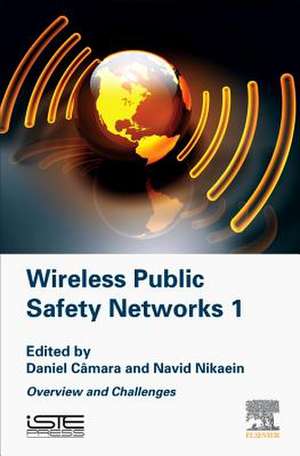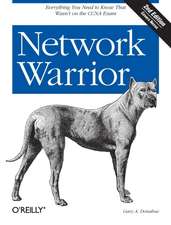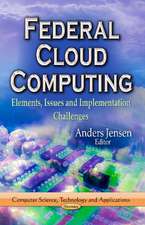Wireless Public Safety Networks Volume 1: Overview and Challenges
Autor Daniel Câmara, Navid Nikaeinen Limba Engleză Hardback – 16 noi 2015
Maintaining communication capabilities in a disaster scenario is crucial for avoiding loss of lives and damages to property. Wireless Public Safety Networks examines past communication failures that have directly contributed to the loss of lives.
This book will give readers a broad view of the PSNs field, analyzing the benefits PSNs may bring to society, the main challenges related to the establishment and maintenance of these networks, the latest advancements in the field, and future perspectives.
- Discusses the ever changing requirements and impact of PSNs in mission critical scenarios
- Analyzes the evolving methods required to meet the growing demand of capable public safety networks
- Covers lessons learned and advances made to wireless communications to help prevent loss of lives and poor practice disaster management
Preț: 611.51 lei
Preț vechi: 671.99 lei
-9% Nou
Puncte Express: 917
Preț estimativ în valută:
117.03€ • 121.73$ • 96.61£
117.03€ • 121.73$ • 96.61£
Carte tipărită la comandă
Livrare economică 08-22 aprilie
Preluare comenzi: 021 569.72.76
Specificații
ISBN-13: 9781785480225
ISBN-10: 1785480227
Pagini: 350
Dimensiuni: 152 x 229 x 23 mm
Greutate: 0.68 kg
Editura: ELSEVIER SCIENCE
ISBN-10: 1785480227
Pagini: 350
Dimensiuni: 152 x 229 x 23 mm
Greutate: 0.68 kg
Editura: ELSEVIER SCIENCE
Public țintă
Communications and signal processing engineers; computer engineers; graduates oin the field of wireless communications, public safety authorities, disaster management professionalsCuprins
1. Introduction to Public safety networks 2. Communication technologies 3. Existent and future architectures 4. Requirements for PSN interoperability5. Emergency alert systems 6. Public Safety Scenarios modelling 7. Fast deployable networks 8. Public Safety applications 9. Validation of mission critical networks protocols 10. Emerging standards 11. Spectrum policies and specific legislations 12. Social networks and disaster scenarios 13. Next generation systems14. Next challenges











